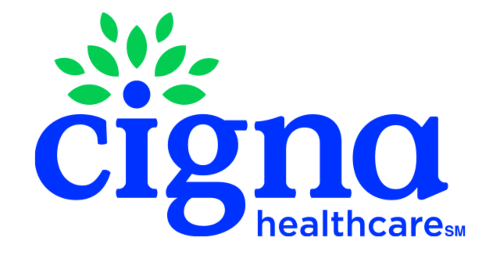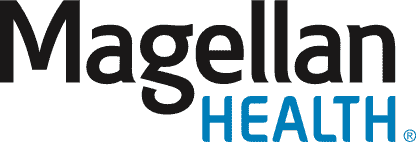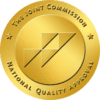Did you know that about two-thirds of American students try alcohol by the 12th grade? On top of that, nearly half of high school students in the U.S. report having used cannabis at least once.
When teens use drugs, it can impact their development and growth, particularly their brain development. It can also lead to health consequences later on in life.
Substance abuse prevention for youth is crucial to help teach teenagers to start making healthy choices while they are young.
Let’s take a look at what you need to know about preventing substance abuse among kids.
Substance Abuse Among Youth: Why Teens Use Drugs
Many different factors can lead to both drug use and misuse by teenagers. It is common for first-time use to occur in social settings with substances that are easy to access, such as cigarettes and alcohol.
When teens continue to use drugs, it might result from a desire for social acceptance or insecurities. Teenagers also might take dangerous risks with drugs because they don’t consider the consequences of their actions.
Some of the common risk factors for teenage drug abuse include:
- Risk-taking or impulsive behavior
- Substance abuse in the family history
- A history of traumatic events
- A behavioral or mental health condition, such as anxiety, depression, or ADHD
- Feelings of social rejection or low self-esteem
There are several negative consequences of teen drug abuse that can affect a teenager’s well-being and health.
If someone you love suffers from a substance abuse issue, you can learn more about our detox program here.
Substance Abuse Prevention For Youth: The Different Concepts of Prevention
Numerous prevention concepts deal with substance abuse among youth. However, you don’t want to rely on your child’s school or the community to prevent drug use. It’s also important to talk to your kids about the consequences of drug use.
The Risk Factor Approach
The risk factor approach for substance abuse prevention for youth focuses on emphasizing educational methods. The goal is to modify specific attitudes and beliefs concerning drug use, self-esteem, and other related factors.
In other words, this approach outlines cause and effect; every action has a reaction. Some of these weigh more heavily than others, and some are easier to change than others. On top of that, risk factors can add up and contribute to a higher likelihood of drug abuse.
This approach focuses on risk factors that tend to influence teen drug abuse and those easier to change.
The Developmental Approach
The developmental approach focuses on the fundamentals of children interacts within their environments. The observation of interaction centers within the family and at school, usually between first through third grade.
The developmental approach focuses on educational potential, positive motivation, and prosocial behavior. It also concentrates on correcting environments that reinforce undesirable patterns of belief, affect, or behavior.
Social Influence Approaches
The social influence approach is a population-based approach to substance use prevention. It recognizes the importance that peers play in both the initiation and progression of teenage drug use
There are four core aspects to this social influence model, which are:
- Providing information on the short-term physiological consequences and negative social consequences of smoking
- Correcting the inflated perceptions of how common smoking and other drug use is
- Modeling, training, reinforcement, and rehearsal of how to resist social influences to smoke or use drugs
- Providing information on the social influence that lead people to use drugs or smoke
This type of intervention mainly concentrates on students between grades six and ten.
The Community-Specific Approach
Another perspective on how to prevent substance abuse for youth is the community-specific approach.
This approach tries to encompass aspects of the previous three approaches. It is oriented towards investigating community variations and population differences. This information allows resources to be distributed and mobilized accordingly.
What Are the Consequences of Teen Drug Abuse?
Many negative consequences can come from teen drug abuse.
These include:
- Poor judgment in personal and social interactions
- Drug dependence, which can put them at an increased risk for serious drug use as they get older
- The risk of mental health disorders increasing or complications to existing disorders
- A higher risk of high-risk sexual activity, unplanned pregnancy, and unsafe sex
- A decline in academic performance
- Impaired driving
Drug use can also result in several adverse health effects. Different drugs are associated with other risks, including:
- Ecstasy: Risk of heart and liver failure
- Cocaine: Risk of stroke, seizures, and heart attack
- Methamphetamine: High doses or long-term use can lead to increased risk of psychotic behaviors
- Cannabis: Risk of learning, memory, concentration, and problem-solving impairment, among other things
- Vaping: Risk of nicotine dependence and exposure to harmful substances
- Opioids: Risk of death from overdose and respiratory diseases
When teens use drugs, they are putting their safety and health at risk and sometimes the health and safety of others as well. Talking to your teen about the importance of making healthy choices and the consequences of using drugs can help prevent teen drug abuse.
Signs of Substance Abuse in Teens
The teenage years are a time of change. If your child is experiencing mood swings, it might just be their rapidly changing hormones. However, you want to pay attention to ensure that their behavior isn’t indicative of drug use.
Some things to watch out for in your teen include:
- Dropping their old friends for a new group
- Losing interest in things they used to love
- Breaking rules
- Sleeping more than they usually do
- Acting aggressive, angry, or despondent
- Showing physical changes like shakes and tremors, watery or bloodshot eyes, frequent nosebleeds, or sudden weight loss
These signs might indicate that your child is using drugs, drinking alcohol, or misusing medication.
Does Someone You Love Have a Substance Abuse Problem?
Substance abuse prevention for youth is essential. It can help ensure that today’s children grow into healthy and capable adults of the future. If someone you love is suffering from a substance abuse issue, there is help available.
Are you looking for a program specifically tailored to your needs or the needs of your loved one? If so, contact us today!


















